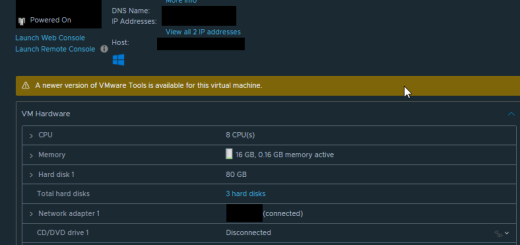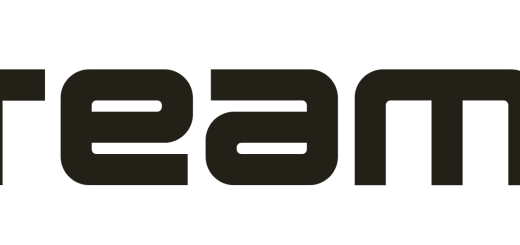Terraform the Essential Automation Tool
Terraform Infrastructure: an Essential Tool for Automation
Terraform is an essential tool for infrastructure automation. This article will discuss Terraform, what it can do for you, and how to get started.

What Is Terraform?
Terraform is an exceptional tool that enables infrastructure’s safe, efficient construction, alteration, and versioning. You can not only effortlessly manage pre-existing infrastructure but also skillfully generate new infrastructure using a simple and declarative syntax. Terraform clearly outlines your desired state, applying transformations seamlessly until your goals are met. The reliability and resilience of Terraform have been demonstrated by its extensive and continuously growing community.
What Can Terraform Do for You?
Terraform can manage your existing resources as well as create new resources.
Infrastructure automation is essential for modern organizations. Terraform is a powerful tool for automating your environment. This blog post will explore why Terraform is popular for automation and how it can help you streamline your infrastructure.
First, let’s take a look at some of the benefits of using Terraform:
Automation: Terraform can help you automate your infrastructure. This can save you time and money.
- Scalability: Terraform can automatically grow and shrink your environment as needed. This can help keep your system running smoothly and without any disruptions.
- Flexibility: Terraform can be adapted to your specific needs. This allows you to get the most out of it and create custom automation scripts to meet your particular needs.
- Security: By automating your infrastructure, you can ensure it remains secure. Terraform can help you create and manage security policies for your systems.
- Reliability: By automating your infrastructure, you can ensure it is reliable. Terraform can help you monitor and maintain your systems.
Deep Dive into Terraform?
Terraform is an open-source automation tool that helps administrators build, change, and manage cloud resources.
Terraform allows administrators to build and manage resources in a repeatable and predictable way, making it an essential tool for infrastructure automation.
One of Terraform’s most powerful features is its ability to change infrastructure resources in a repeatable, predictable, and secure manner. This makes it a valuable tool for automating deployment and scaling processes.
In addition, Terraform is an open-source tool, and you can trust that the code is well-written and maintained. Finally, Terraform is supported by the community, so if you have a question or need help, there is likely someone out there who can help you.
What is Infrastructure as Code (IaC)?
Infrastructure as code (IaC) is a software development practice that automates systems’ deployment, configuration, and operation.
When it comes to automation, Terraform is an essential tool.
In a nutshell, Terraform lets you declaratively configure infrastructure resources as code.
You can easily maintain and update your infrastructure without touching the actual code. In addition, because Terraform is based on open-source technology, you can trust it’s reliable and secure.
So if you’re looking to streamline your infrastructure management, Terraform is a must-have tool.
What are the benefits of using Terraform for IaC?
Here are some of the benefits of using Terraform for IaC:
- Terraform is easy to use: You needn’t be a programming expert.
- It’s flexible: You can use it to manage any infrastructure.
- It’s reliable: Terraform is built on the proven foundation of IaaS providers like AWS, Azure, and Google Cloud Platform.
If you’re looking for an automation tool that can help you streamline your infrastructure, Terraform is a great option.

How does Terraform work?
Terraform is a pivotal tool for automation, allowing you to define and manage resources using code. This approach, known as Infrastructure as Code (IaC), simplifies scaling and maintenance. By interpreting configuration files, Terraform implements the desired changes. Its language, designed specifically for this purpose, ensures that your scripts are seamlessly integrated.
Terraform’s ability to handle diverse environments offers flexibility in configuring distinct segments of your setup.
What kind of infrastructure can Terraform manage?
Terraform stands out in automation, capable of managing a diverse range of resources, including:
- Cloud providers
- Load balancers
- Web servers
- Database servers
- Storage solutions
- Mobile apps
Its automation capabilities streamline management, mitigating potential issues and enhancing performance.
Automating Your Infrastructure with Terraform
Terraform is a go-to for consistent and scalable resource management. Here’s why:
- Consistency: Regardless of your environment’s complexity, Terraform ensures uniform deployment of resources.
- Comprehensive Automation: Terraform can automate application deployment and configuration beyond basic infrastructure.
- Scalability: Terraform facilitates easy scaling, adapting to your evolving needs.
What are the advantages of automaton with Terraform?
Here are some of the advantages of using Terraform:
- Reduced complexity: With Terraform, you can easily create and manage your infrastructure as a single, cohesive unit.
- Reduced risk: By automating your infrastructure, you can reduce the risk of outages and ensure your systems run smoothly.
- Increased flexibility: You can scale your infrastructure without worrying about the consequences.
- Enhanced security: By automating your infrastructure, you can protect it from unauthorized access.
- Increased predictability: By automating your infrastructure, you can reduce the chance of surprises and improve the predictability of your operations.
If you want to automate your infrastructure safely, flexibly, and reliably, Terraform is an essential tool.
How can Terraform be used to manage cloud infrastructure?
It can create and tear down cloud infrastructure, manage resources, and more.
This can be useful if you need to change the configuration of a cloud service. Terraform can also be used to manage resources, for example, by creating and managing instances of applications. This can be useful if you need to scale up an application.
Terraform can also be used to manage dependencies. This is useful, for example, if you want to ensure that a service is always available.
What are the differences between Terraform and other IaC tools?
Terraform is a tool that helps you automate your infrastructure. It has a few different features that make it an excellent choice for IaC (Infrastructure as a Code) tools. Terraform can:
- Manage and create infrastructure plans
- Automate the deployment and management of infrastructure
- Monitor and manage infrastructure
- Scale your infrastructure
Getting Started with Terraform
Here are some reasons why you should start using Terraform:
- User-friendly: Terraform is easy to use.
- Dependable: Terraform is reliable.
- Flexible: Terraform is versatile.
- Swift: Terraform is fast.
- Adaptable: Terraform is extensible.
- Well-supported: Terraform has excellent support.
- Open-source: Terraform is open source.
- Cost-effective: Terraform is affordable.
- Seamless Integration: Terraform integrates smoothly with other tools.
- Future-ready: Terraform is future-proof.
- Universal: Terraform can manage any infrastructure.
- Automation Ally: Terraform is a valuable tool for infrastructure automation.
How to write Terraform scripts
Terraform is a declarative programming language that enables you to create, manage, and evolve infrastructure as code. This makes it extremely easy to maintain and troubleshoot your infrastructure.
In addition, Terraform can orchestrate multiple tools and services, making it ideal for scaling your infrastructure. If you want to automate your infrastructure, Terraform is an essential tool.
How to use Terraform modules
Terraform is a powerful tool for infrastructure automation. This article will show you how to automate tasks using Terraform modules. Terraform is an excellent tool for automating infrastructure tasks. This article will show you how Terraform modules can automate routine tasks.
We’ll start by creating a module to automate the creation of a new virtual server. Then, we’ll use the module to create and manage our virtual server. Finally, we’ll use the module to create a new container instance. By using Terraform modules, we’ve been able to automate the entire process of creating a new virtual server, managing it, and deploying a container instance. This makes it easy to repeat these tasks regularly without writing any additional code.
Best practices for using Terraform
Terraform is a powerful tool for infrastructure automation. It makes it easy to create, manage and scale your infrastructure as needed.
There are a few best practices that you should follow to ensure that your Terraform configuration is adequate.
First, use a standard for your resources. This will make it easier to track and manage your resources. Next, use Terraform modules to extend and improve your Terraform configuration. This will give you more flexibility and control over your infrastructure. And finally, use Terraform conditionals to fine-tune your Terraform configuration.
This will allow you to optimize your infrastructure for specific scenarios.
You can get the most out of Terraform by following these best practices.
How to troubleshoot Terraform
Common problems when using Terraform include incorrect configuration, incorrect resource definitions, and missing dependencies. To solve these problems, you must understand the basics of Terraform syntax, understand Terraform modules, and use the Terraform CLI. Extensive documentation is available on the terraform website.
Advanced Terraform Features
Another advanced feature of Terraform is its ability to manage multiple environments. This means you can have different versions of your services running in different environments, ensuring that you always have a stable environment available for testing.
Terraform also has built-in support for versioning and rollback. This means you can always revert to a previous infrastructure version if something goes wrong.
Overall, Terraform is an essential tool for infrastructure automation. It offers advanced features such as code management and multiple environment support, making deploying new or changed services easy.
How to use Terraform variables
Here’s a quick overview of how to use Terraform variables.
First, you create a resource in Terraform. For example, you might create a virtual machine that you can use to test your configuration.
Next, you assign a Terraform variable to the resource. For example, you could set the number of virtual machines you want to create.
Now, you can use the Terraform variable to specify the settings for the virtual machines. For example, you could select the virtual machine type, the virtual disk size, and the number of cores.
How to use Terraform provisioners
Terraform is a powerful tool for infrastructure automation. This article will show you how to use Terraform provisioners to create, manage, and update your infrastructure resources.
To get started, first create a Terraform configuration file. This file defines the infrastructure resources that you want to provision. You can use any language that supports the Terraform language syntax.
Next, use the Terraform provisioner to create the infrastructure resources. The provisioner can create servers, clusters, and other resources. Finally, use the Terraform update provisioner to update your infrastructure resources. Again, the provisioner can update servers, clusters, and other resources.
Terraform is a powerful tool that can help you automate your infrastructure. This article will show you how to use Terraform provisioners to create, manage, and update your infrastructure resources.
How to use Terraform Inputs and Outputs
When using Terraform, you will need to specify the inputs and outputs. Terraform will use your information to create a plan for your infrastructure.
The first step is to specify the inputs. Next, you will need to list the resources used in your infrastructure. Finally, Terraform will use these resources to create your infrastructure.
The second step is to specify the outputs. Finally, you will need to list the resources created by your infrastructure. Terraform will use these resources to create the desired state for your infrastructure.
By following these steps, you can create a plan for your infrastructure. Terraform will take the information you give and use it to create the desired state for your infrastructure.
How to use Terraform workspaces
To get started with Terraform, you first need to create a workspace. A workspace is a directory where you store all of your Terraform files. You can create a new workspace or use an existing workspace.
Once you have created your workspace, you can start to configure it. Terraform workspaces are configured in a declarative style, which means you can write your configuration files in a simple language, and Terraform will automatically do the rest.
Cost savings
Terraform is a tool that can help you save costs on your infrastructure automation. In addition, it can help you create and manage your infrastructure more efficiently, ensuring it is always up and running.
One of the most significant benefits of using Terraform is that it can help you save money on your infrastructure. By using Terraform, you can create and manage your infrastructure more efficiently, ensuring it is always up and running. This can save you much money in the long run.
Another great benefit of using Terraform is that it can help you scale your infrastructure quickly. If you need to scale your infrastructure rapidly, Terraform can help you do that. Terraform can also help you keep your infrastructure consistent across multiple environments.
Overall, Terraform is an excellent tool for infrastructure automation. It can help you save money and scale your infrastructure quickly. If you are looking for a tool to help you manage and automate your infrastructure, Terraform is an essential tool to consider.
Time savings
Terraform is a tool that can save you time regarding infrastructure automation. It allows you to declaratively create, manage, and monitor your infrastructure in a repeatable way. This can save you time on day-to-day tasks and help you keep your infrastructure running smoothly.
For example, you could use Terraform to create a new server instance, add the necessary software, and configure the settings. Or you could use Terraform to automate the deployment of a new application.
Increased scalability
One of the main benefits of using Terraform is that it can scale up or down your infrastructure to meet your needs. This is great for when your application or service grows or decreases in popularity.
Additionally, Terraform can also help you manage your infrastructure more reliably. By automating your infrastructure, you can reduce the amount of manual work that you have to do. This can help ensure your system is up and running more often, improving performance and reliability.
Improved security
Terraform is a tool that helps you to manage your infrastructure more effectively. It automates, creates, changes, and deletes resources in your infrastructure.
One of the main benefits of using Terraform is that it helps to improve security. By automating creating, changing, and deleting resources in your infrastructure, Terraform helps reduce the risk of human error. This can lead to a greater level of security in your infrastructure.
Improved team collaboration
Terraform is an essential tool for infrastructure automation. It improves team collaboration by providing a standardized way to manage infrastructure. This makes it easy to share resources between teams, as well as make changes to the infrastructure without affecting other teams.
Terraform has several benefits for teams.
For example, it improves team collaboration by providing a standardized infrastructure management method. This makes it easy to share resources between teams, as well as make changes to the infrastructure without affecting other teams.
In addition, Terraform makes it easy to diagnose and fix infrastructure issues. This is important, as infrastructure can often be one of the organizations’ most significant sources of disruption. By being able to diagnose and fix problems quickly, Terraform helps to keep teams running smoothly.
Conclusion
Terraform is a powerful tool for infrastructure automation. It can be used to create and manage cloud-based infrastructures and on-premise environments. By automating your infrastructure, you can ensure that it is always running smoothly.
Terraform also makes adding new components to your infrastructure easy without rebuilding it from scratch. In addition to infrastructure automation, Terraform can manage applications and services. This makes it a valuable tool for DevOps teams.
If you are looking for a powerful tool for automation, Terraform is an excellent choice. Please read more about it and see how it can help your organization.
FAQ
Is Terraform right for me?
Terraform is a powerful tool for automating your infrastructure. It makes it easy to create, manage, and update your infrastructure as conditions change.
Is Terraform a tool for infrastructure automation?
Terraform is a powerful tool for infrastructure automation. It enables you to create, manage, and transform your infrastructure as code.
What are the benefits of using Terraform?
There are several benefits to using Terraform, including its ability to manage infrastructure as code, its ability to provision resources dynamically, and its support for multiple languages and platforms.
Is Terraform a good choice for my infrastructure automation needs?
Yes, Terraform is an excellent choice for infrastructure automation needs. It provides a declarative language for defining and managing infrastructure, can integrate with other tools for automating tasks, and has a large community of users.
What is Terraform?
Terraform is an open-source program that enables you to manage and orchestrate infrastructure changes. It allows you to create, update, and delete infrastructure components from a single source. Terraform eliminates the need to execute multiple scripts and makes combining different changes into a single operation easy.
Terraform has quickly become essential for anyone working with Infrastructure as Code (IaC). It allows you to define and manage your infrastructure declaratively. This makes it easy to track your infrastructure and reproduce it anywhere.
In this article, we will take a look at what Terraform is and how you can use it to automate your infrastructure.




1 Response
[…] environment’s current or desired state. The state file is automatically generated by Terraform and contains information about all resources created or modified by […]